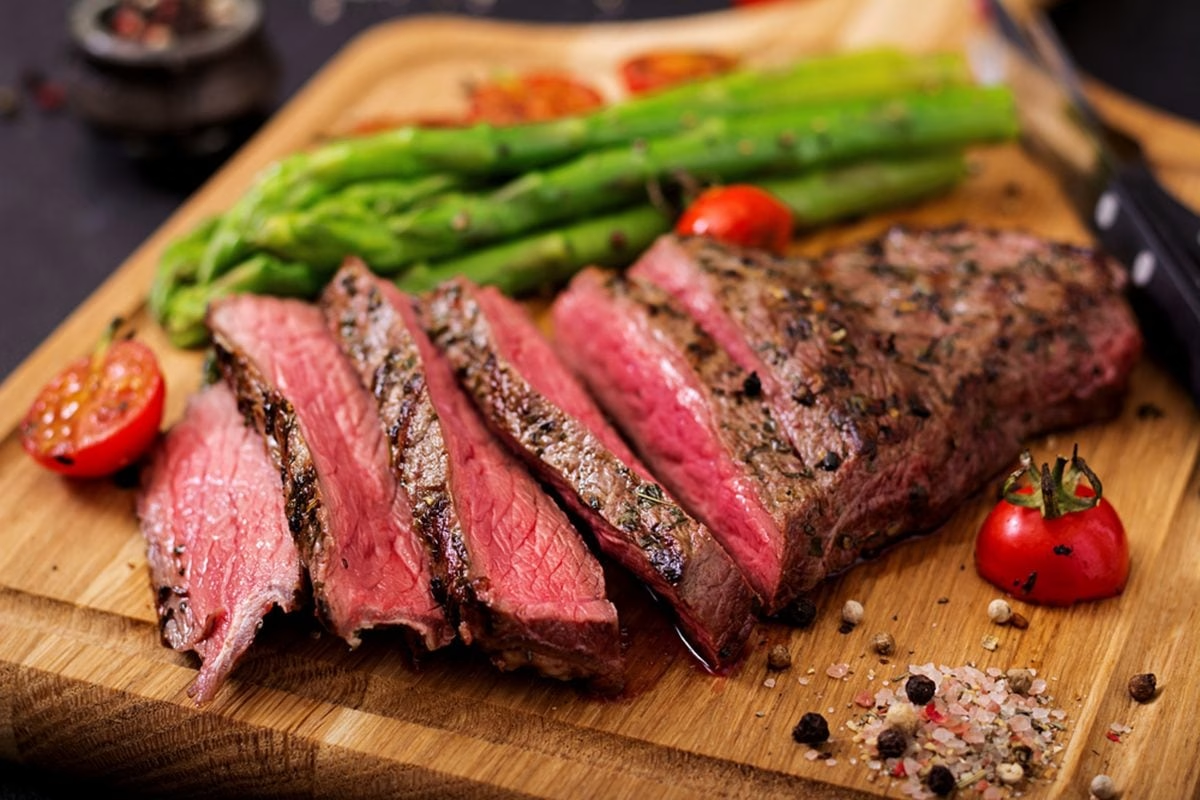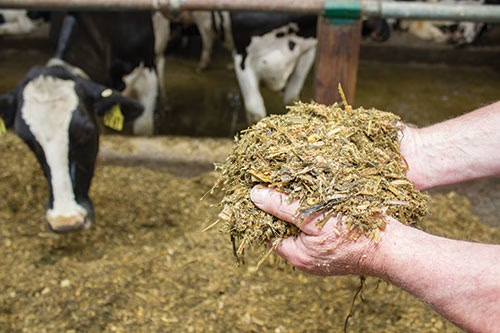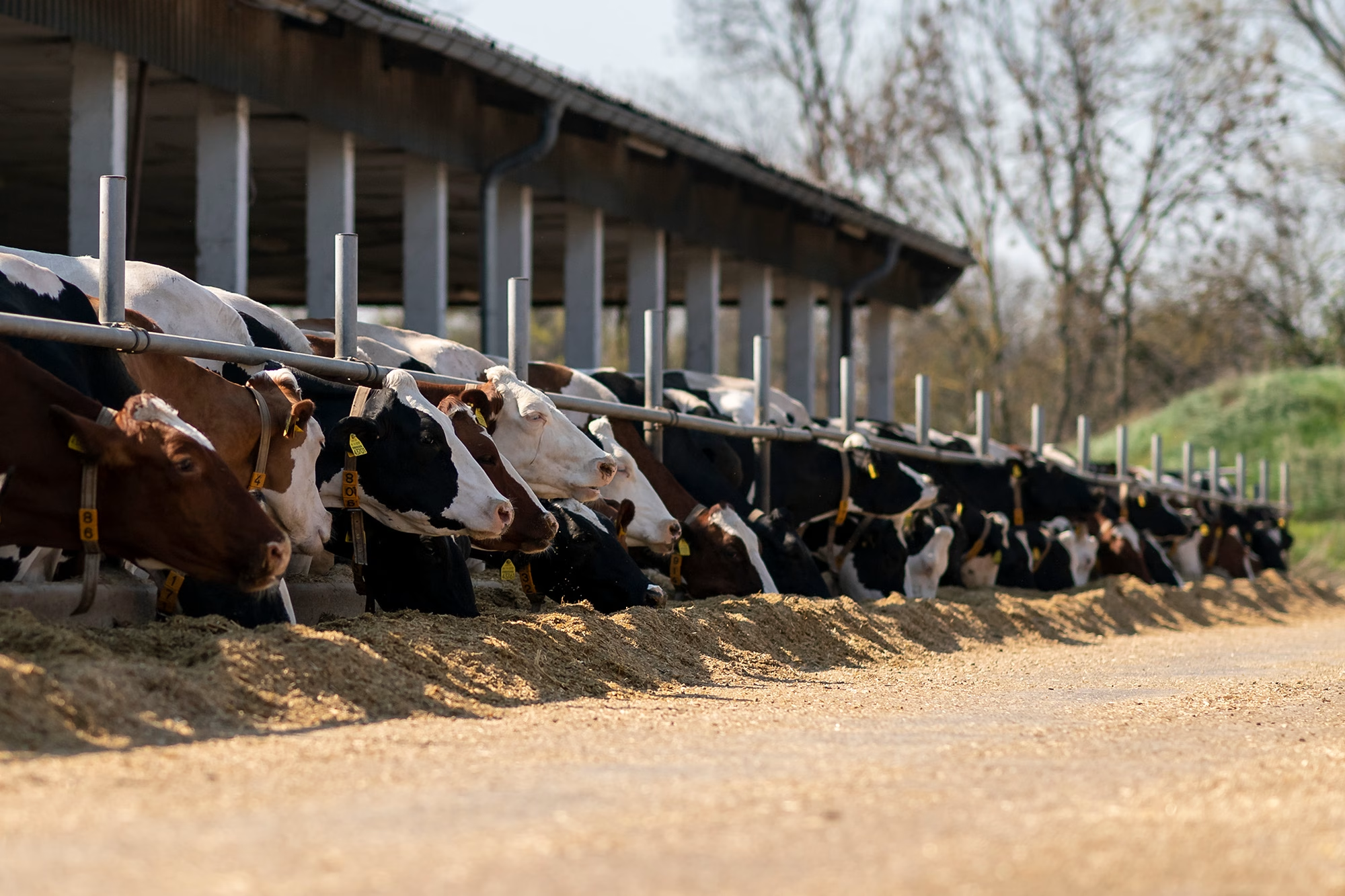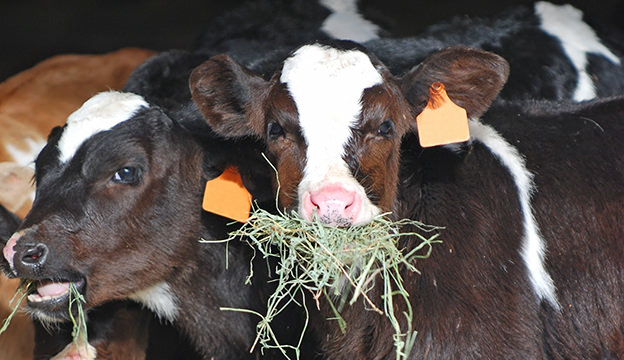Your silage storage choice costs you $280 per cow annually. See the shocking USDA data proving that your top layer is burning pure profit.
EXECUTIVE SUMMARY: USDA research exposes a $28,000 annual profit difference between uncovered bunker silos and silage bags on 100-cow dairies, with the financial damage coming from multiple directions. Operations using uncovered bunkers produce 1,443 fewer pounds of milk per cow annually while purchasing significantly more feed (74 tons more alfalfa and 39 tons more corn) due to nutrient losses during storage. The economic impact compounds further through increased manure handling (463 extra tons annually) and higher storage costs ($4,867 more yearly), creating a perfect storm of financial inefficiency. These findings have been validated by producers like Bill Weaver of Meadowbrook Dairy, who documented a ,000 reduction in purchased feed and a 900-pound milk production increase after switching to improved storage. With milk prices under pressure and input costs rising, the data provides compelling evidence that proper silage storage represents one of the most significant profit opportunities available to modern dairy operations.
KEY TAKEAWAYS:
- Farms using uncovered bunker silos sacrifice approximately $280 per cow in annual profit compared to those using silage bags, primarily through reduced milk production and increased purchased feed costs
- Every percentage point of dry matter loss represents vanishing profit, with uncovered bunkers experiencing 25%+ losses compared to 8-11% in adequately managed alternatives.
- The financial impact scales directly with herd size, potentially reaching $140,000 annually on 500-cow operations.
- Most operations rapidly recoup storage system transition costs through immediate reductions in purchased feed expenses and increased milk production.
- Despite higher initial investment costs for some alternatives, the operational economics overwhelmingly favor improved storage systems when all factors are considered.

That discolored layer on your silage pile isn’t just spoiled feed—it’s the equivalent of watching $14,500 vanish from your annual bottom line.
That’s what USDA research definitively proves happens on a typical 100-cow dairy using uncovered bunker silos instead of properly managed storage.
While most dairy publications politely dance around the issue with gentle suggestions, The Bullvine calls it what it is: preventable financial hemorrhaging devastating dairy profits nationwide.
“Uncovered bunker silos underperform bagged silage systems by a whopping $28,000 annually on a typical 100-cow dairy. That’s $280 per cow in pure profit rotting away in your storage system.”
THE SHOCKING PROFIT DRAIN HIDING IN YOUR BUNKER SILO
Complex data from USDA research exposes the brutal economic reality of poor silage management.
Uncovered bunker silos—still shockingly common across dairy operations—slash farm profits by a staggering $14,500 per year compared to traditional stave silos on a typical 100-cow dairy.
Even more telling, they underperform bagged silage systems by a whopping $28,000 annually. That’s $280 per cow in pure profit in your storage system.
The financial hemorrhage doesn’t stop there. USDA research demonstrates that nutritive loss in uncovered bunker silos directly reduces milk production, with average milk output dropping from 21,355 pounds per cow with bagged silage to just 19,912 pounds with uncovered bunker storage.
That’s a 1,443-pound production hit per cow annually! At current milk prices, this production loss alone represents thousands in vanished revenue that should be in your pocket.
These aren’t speculative numbers or theoretical projections—they’re documented financial outcomes from USDA comparison studies that most dairy nutritionists don’t discuss bluntly enough.
SILAGE OR COMPOST? HOW YOUR TOP LAYER KILLS PRODUCTION
The real damage extends far beyond what you can see in that discolored top layer.
Look at the complex numbers: farms using uncovered bunker silos produced significantly less alfalfa silage (302 tons DM) compared to operations using silage bags (362 tons DM).
That’s 60 tons of valuable feed disappearing into thin air through spoilage and poor preservation.
When silage quality deteriorates, digestibility plummets. USDA data confirms this leads to increased manure production—concrete evidence that valuable nutrients are passing through your cows undigested and unutilized.
Operations using uncovered bunkers produced 7,249 tons of manure annually compared to just 6,786 tons with bagged silage. That’s 463 extra tons of manure you’re handling for no good reason other than poor silage preservation.
“Farms using uncovered bunker silos produced 463 more tons of manure annually than those using silage bags—concrete evidence that valuable nutrients are passing through your cows undigested.”
THE HIDDEN FEED BILL DRAINING YOUR BANK ACCOUNT
The nutritional deficits trigger a devastating financial domino effect: farms with poorly preserved silage purchase significantly more supplemental feed.
The data is stark: operations using uncovered bunker silos needed to purchase 31 tons of alfalfa. In comparison, operations with properly preserved silage in bags had 43 tons of surplus alfalfa to sell.
That’s a 74-ton swing in alfalfa economics alone.
The pattern continues with grain purchases. Farms using uncovered bunkers required 47 tons of purchased corn grain compared to operations with bagged silage that needed only 8 tons.
That’s an additional 39 tons of corn you’re buying because your storage system fails to preserve what you’ve already grown. This difference adds thousands to your annual expenses at today’s feed prices.
“The data is stark: Operations using uncovered bunker silos purchased 31 tons of alfalfa while farms with bagged silage had 43 tons surplus to sell—a 74-ton swing in alfalfa economics alone.”
THE UNDENIABLE ECONOMIC PROOF: NUMBERS DON’T LIE
“The numbers don’t lie: Operations using silage bags produced 1,443 more pounds of milk per cow annually than those with uncovered bunkers—while spending $4,867 less on storage costs.”
Here’s what the USDA research revealed about annual production costs and performance metrics for each silage system on a 100-cow dairy:
| Production or cost parameter | Units | Stave silos | Uncovered bunkers | Silage bags | Silage bales |
| Alfalfa hay production | ton DM | 143 | 144 | 143 | 144 |
| Alfalfa silage production | ton DM | 345 | 302 | 362 | 341 |
| Corn silage production | ton DM | 291 | 277 | 308 | 290 |
| High moisture corn production | ton DM | 160 | 160 | 160 | 160 |
| Corn grain production | ton DM | 54 | 55 | 55 | 54 |
| Alfalfa purchased (sold) | ton DM | (14) | 31 | (43) | (13) |
| Corn grain purchased (sold) | ton DM | 29 | 47 | 8 | 36 |
| Protein supplements purchased | ton DM | 47 | 42 | 58 | 42 |
| Average milk production | lb/cow | 20,973 | 19,912 | 21,355 | 20,882 |
| Manure production | ton | 6,966 | 7,249 | 6,786 | 6,999 |
| Feed and machinery storage cost | $ | 22,164 | 23,527 | 18,660 | 26,295 |
| Purchased feed and bedding cost | $ | 26,992 | 29,521 | 27,278 | 26,485 |
| Total production cost | $ | 237,348 | 237,133 | 231,746 | 237,926 |
Despite uncovered bunkers having slightly lower total production costs compared to stave silos, their dramatically lower milk production and higher feed purchasing requirements devastate overall profitability.
Meanwhile, silage bags deliver superior milk production with lower storage costs and reduced purchased feed requirements—a financial home run across every important category.
WHAT THIS COSTS YOUR DAIRY RIGHT NOW
Let’s put this in perspective. If you’re currently using uncovered bunker silos on your 100-cow dairy, you’re:
- Losing 1,443 pounds of milk per cow annually ($288/cow at $20/cwt)
- Purchasing 74 more tons of alfalfa than you would with properly preserved silage
- Buying 39 more tons of corn grain unnecessarily
- Handling 463 extra tons of manure
- Paying $4,867 more in storage costs than you would with silage bags
All told, this amounts to an approximately $28,000 annual profit difference between using uncovered bunkers and silage bags.
For a 500-cow dairy, that balloons a potential $140,000 annual profit difference.
“For a 500-cow dairy, poor silage storage translates to a potential $140,000 annual profit sacrifice. Can you afford to keep composting your money?”
SUCCESS STORY: FROM SKEPTIC TO BELIEVER
Bill Weaver of Meadowbrook Dairy in Wisconsin was skeptical when his consultant showed him these numbers. “I thought our bunker system was doing fine. Sure, we had some waste, but I figured that was just the cost of doing business,” Weaver shares.
After running the calculations for his 320-cow operation, Weaver realized he could lose over $89,000 annually. He made the switch to silage bags two years ago.
“The numbers don’t lie. Our purchased feed costs dropped by nearly $52,000 the first year, and milk production increased by almost 900 pounds per cow. The bags paid for themselves within months, not years. I can’t believe I waited so long to make the change,” Weaver reports.
EXCUSES COSTING YOU THOUSANDS: THE REALITY CHECK
“But bunker silos allow faster filling and emptying.”
True, but what good is operational speed if it’s costing you $28,000 annually?
The USDA research accounted for labor differences, finding that even with the efficiency advantages, uncovered bunkers still delivered the worst overall economic performance.
“Switching storage systems requires a major capital investment.”
Yes, but the research accounts for all capital costs.
The four stave silos (18 ft. x 70 ft.) cost $19,500 each, while the two bunker silos (40 ft. x 140 ft.) cost $45,000 each.
Despite the higher initial investment in bunkers, they still underperformed economically due to more significant feed losses and lower milk production.
“I can’t afford to switch right now.”
The better question is: can you afford not to?
With a $28,000 annual advantage for bagged silage over uncovered bunkers, most operations would recoup transition costs relatively quickly.
Learn more about financing options for silage storage improvements.
THE SCIENCE PROVING YOU’RE LOSING MONEY DAILY
When preserving nutrients, the data doesn’t leave room for debate.
Research consistently shows that storage losses vary dramatically between systems. According to Kansas State University research, properly managed silage bags generally experience dry matter losses between 8-11%, while bunker silos—even when well-managed—typically experience losses of 15-20%.
Uncovered bunkers can see losses exceeding 25% in many real-world scenarios.
These aren’t trivial differences. Every percentage point of dry matter loss represents feed you’ve paid to produce but can’t feed to your cows.
At current feed prices, thousands of dollars are rotting on many dairy operations.
STOP BURNING PROFITS: THE BOTTOM LINE
Let’s be brutally honest: if you’re still using uncovered bunker silos, you’re voluntarily sacrificing tens of thousands in annual profit.
The data is crystal clear. Superior silage management directly translates to:
- Higher milk production (up to 1,443 pounds more per cow annually)
- Reduced purchased feed requirements (saving 39 tons of corn and 74 tons of alfalfa per 100 cows)
- Lower manure handling costs (463 fewer tons annually)
- Improved feed conversion efficiency
- Higher overall farm profitability ($28,000 advantage for bagged silage over uncovered bunkers)
The financial advantage of proper silage management isn’t marginal—it’s massive.
With milk prices constantly under pressure and rising input costs, can you keep sacrificing ,000 in annual profit through outdated silage practices?
The question isn’t whether you can afford to invest in better silage management. The USDA data makes it clear: you can’t afford not to.
Stop composting your profits and start converting that top layer into what it should be: premium-quality feed that drives your dairy’s financial performance instead of dragging it down.
Your banker and nutritionist will thank you; most importantly, your bottom line will thank you.
Learn more:
- Maximize Dairy Profits with High-Quality Corn Silage: Top Strategies for Success – Learn how superior corn silage can boost starch content by 11%, enhancing rumen propionate production and significantly improving your dairy’s profitability.
- Maintaining Cow Health and Milk Yield During Silage Changes: Pro Tips – Discover expert strategies for smoothly transitioning between silage batches to prevent disruptions in dry matter intake, rumen function, and milk production.
- 7 Proven Strategies to Perfect Silage Quality for Maximum Milk Production – Explore comprehensive techniques for optimizing silage management, including quick decision-making during weather changes to ensure proper fermentation and enhanced nutritional value.
 Join the Revolution!
Join the Revolution!
Join over 30,000 successful dairy professionals who rely on Bullvine Daily for their competitive edge. Delivered directly to your inbox each week, our exclusive industry insights help you make smarter decisions while saving precious hours every week. Never miss critical updates on milk production trends, breakthrough technologies, and profit-boosting strategies that top producers are already implementing. Subscribe now to transform your dairy operation’s efficiency and profitability—your future success is just one click away.







 Join the Revolution!
Join the Revolution!































